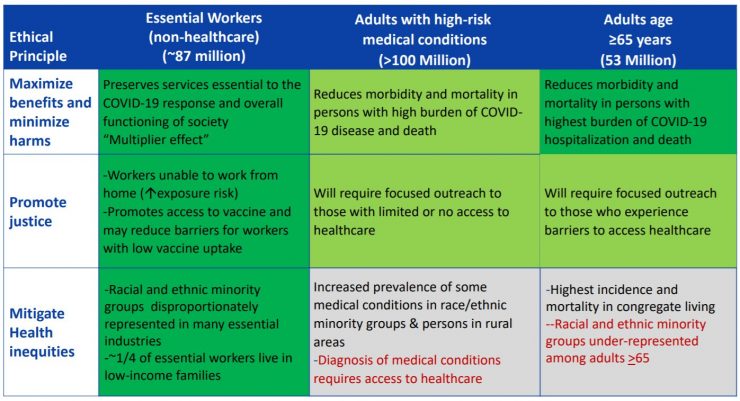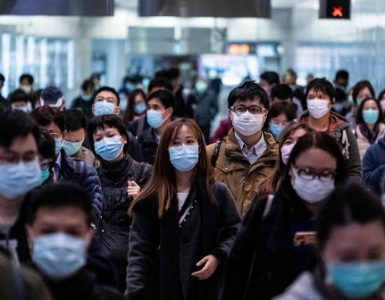This is based on the slide pack below.
— David Algonquin (@surplustakes) December 17, 2020
This takes for granted that healthcare workers will be first-in-line. The question is whether the next group should be other essential workers, the over-65s or adults with high-risk conditions.https://t.co/r9QDsMZt5E
First, Science.
— David Algonquin (@surplustakes) December 17, 2020
The authors rely on modelling of the deaths prevented by prioritising each of the three groups, for both a "disease-blocking" and an "infection-blocking" vaccine scenario.
Despite this, the authors conclude that the "Differences among 3 strategies is minimal" (sic). Each strategy is thus awarded 3 out of 3 marks.
— David Algonquin (@surplustakes) December 17, 2020
Implementation is considered easier for the elderly than the other two groups, resulting in the scores below: pic.twitter.com/DpQwiu72Rd
Other considerations that seem important are:
— David Algonquin (@surplustakes) December 17, 2020
i) adults with high-risk medical conditions must have been diagnosed which implies that they have access to healthcare (which counts against them)
ii) essential workers are unable to work from home
This is translated to a mark of 1/3 in the overall assessment, meaning that Essential Workers pip the elderly to the post by one mark.
— David Algonquin (@surplustakes) December 17, 2020
What drama! pic.twitter.com/ZPGJaax3Hc
This seems to me a clearly wrong decision and is out of line with what the UK, for example, is doing.
— David Algonquin (@surplustakes) December 17, 2020
I am also sceptical of the modelling results given the vastly greater risks faced by the elderly (the below graph showing this is also from the report). pic.twitter.com/uKcMqvOVnt










